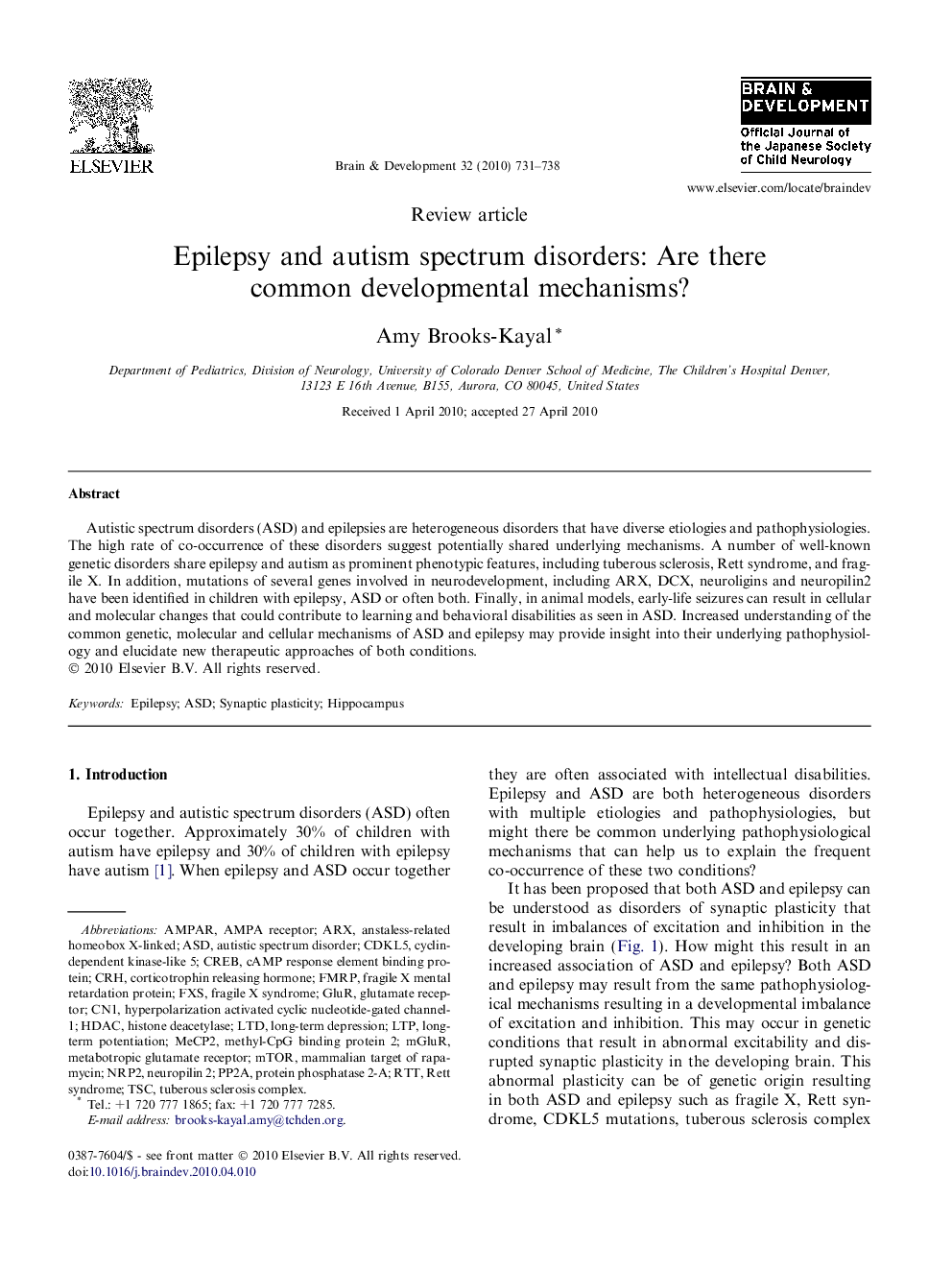| Article ID | Journal | Published Year | Pages | File Type |
|---|---|---|---|---|
| 3037902 | Brain and Development | 2010 | 8 Pages |
Autistic spectrum disorders (ASD) and epilepsies are heterogeneous disorders that have diverse etiologies and pathophysiologies. The high rate of co-occurrence of these disorders suggest potentially shared underlying mechanisms. A number of well-known genetic disorders share epilepsy and autism as prominent phenotypic features, including tuberous sclerosis, Rett syndrome, and fragile X. In addition, mutations of several genes involved in neurodevelopment, including ARX, DCX, neuroligins and neuropilin2 have been identified in children with epilepsy, ASD or often both. Finally, in animal models, early-life seizures can result in cellular and molecular changes that could contribute to learning and behavioral disabilities as seen in ASD. Increased understanding of the common genetic, molecular and cellular mechanisms of ASD and epilepsy may provide insight into their underlying pathophysiology and elucidate new therapeutic approaches of both conditions.
